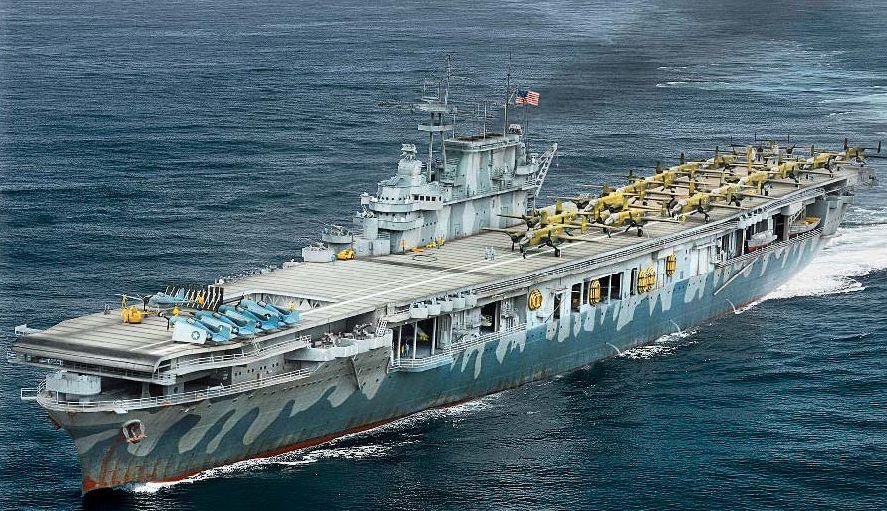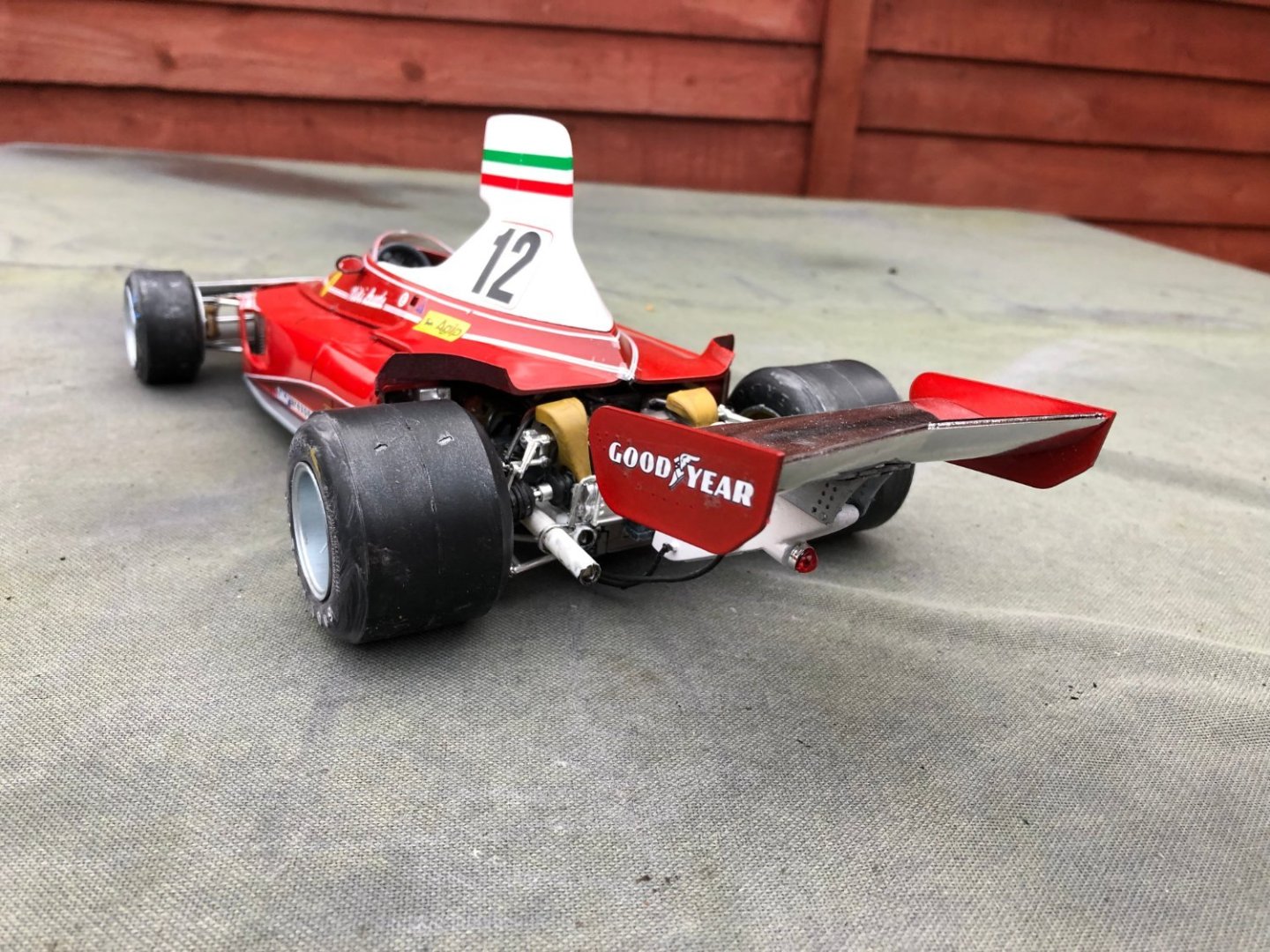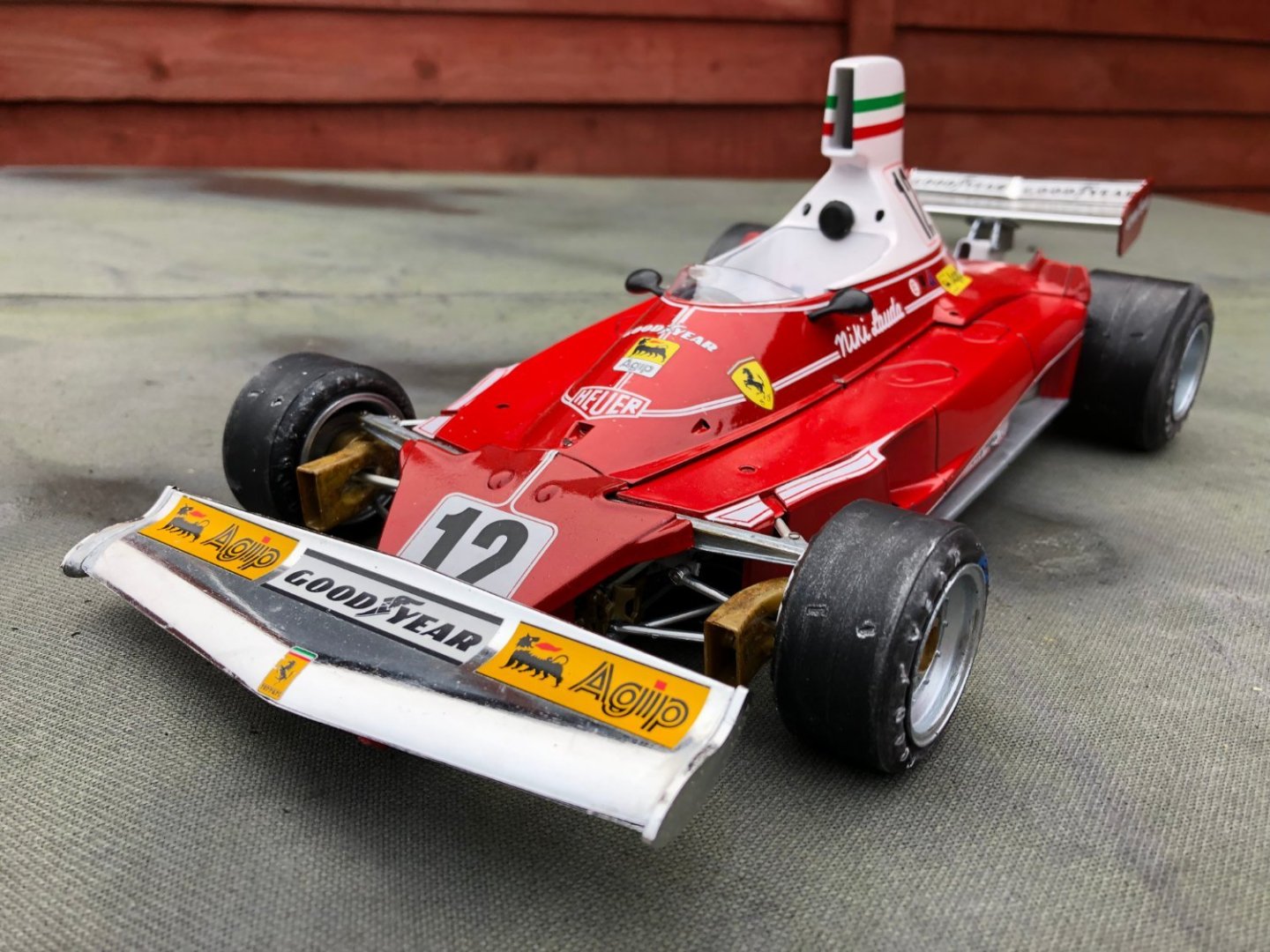-
Posts
4,375 -
Joined
-
Last visited
Content Type
Profiles
Forums
Gallery
Events
Everything posted by Egilman
-

Ferrari 312t by kpnuts - Revell - 1/12 - PLASTIC
Egilman replied to kpnuts's topic in Completed non-ship models
Here they are, out of the five images there are two duplicates.... 9398 & 9399, these are the three images... The 3/4 rear shot, 9400, is the only new one... (last of the three) Gorgeous Model Kp!!! Very well done..... -
Oh, my pleasure Richard, I love history more than modeling I think... (and it shows I guess) and that's another one I need to get back to... It's been a while... I bought something else to aide that voyage about a year and a half ago... Part of it was knowledge of PE and the build process, but thanks to RGL & Mikes 1/700 work, (and a few others) I'm learning.... Some of it was kit parts or the absence of them, It was the way Dragon did the Gleaves/Benson series of Destroyer Kits, but I found the parts I needed.... But I don't want to throw a derail into your wonderful Churchill tank log...
-
Yes Deep and Wide... and realize, 3D printing in production modeling is just starting to get recognized as a marketable product, Full kits are becoming available now.. (prices are very high as they figure out the way, but will come down in the future) Most aftermarket is still cast resin, but 3D printing is making inroads in that market... The best thing about it, is the guys doing 3D printing production are doing subjects the big plastic companies are ignoring, the kits we all would have liked to see are now slowly becoming available... It's a good time to be a modeler, if you have the pocketbook for it....
-
That is why you get the big bucks..... {chuckle} Yes, it is one of the very early molds... When Tamiya originally started producing models, they were all wired remote control.... they eventually stopped producing the motors and reduction gearing when they realized that most people were building them as static pieces despite the motorized functions.... For years everything they produced was from the same molds they produced the remote control kits from... Some of them are very rare collectors items today, the last four I got rid of were traded for over 800.00 in modern kits... (psst; they are only valuable if they have the motors, gear pak and controller, and are unstarted) And obviously, some of those molds are still producing kits today....
-
That is exactly what the Wright Flyer was, for all intents and purposes, an upscaled Wright 1899 kite with an engine.... (the 1899 was the kite they tested the wing warping mechanism on and realized they had it, they knew how to control an aircraft in roll) They still had a lot to figure out, but they knew how to get three axis control, it was only a matter of time after that... In fact they called their machine a kite before it flew, it was after the first flights they started calling it the "Flyer" A form of the control system they invented is still used today for the "flyable kites" you see them doing aerobatic stunts with at kite flying meets...
-
Greg, what is that tool your using for the mast? It looks like a multi-purpose benchtop vice of some type...
- 233 replies
-
Testors Liquid glue is Acetate and Methyl Ethyl Ketone, about a 50/50 mix... I believe that Tamiya Ultra thin is the same stuff but a little heavier on the Acetate... (which is the drier/evaporative component) Tamiya's airbrush cleaner is the same stuff just a bit heavier on the Ketone... (The plastic melter component) I suspect that off brand glue you already are using is the exact same stuff... There are other glue formulations that use Acetone as their active ingredient, they smell like nail polish remover... Aside from the smell, in the quantities we use them they are of no danger to human life... You can buy them in various sized containers (up to a gallon) at most big box hardware stores..... As far as the getting high off the fumes component, the government mandated that a chemical be added to them which will give you a headache long before they get you high way back in the late '70's... For general gluing I use the cap brush and place the cap over the bottle when not gluing, pretty much standard practice... For fine gluing, I put the cap back over the bottle after dipping my fine pointed gluing brush in it.... Anyway they are completely safe, with or without a mask.. (although I wouldn't drink the stuff, {chuckle})
-
When are we going to see an accurate film about anything... Fact is the enemy of the filmmaker today... It's all about the personalities and the invented dramas from the twisted minds of the producers... Who needs it? There is enough phoney drama to go around.... WE are inundated with it on a daily basis...
-
Whenever I was doing a mountainous terrain, I always affixed a wire screen over the cardboard/foam base shape, same technique as plastering a wall or stucco applied to a brickface on an outside wall... (chicken wire works well and is what holds the plaster to the base shape) With that, the plastering comes easy, you mix it the consistency of thick caking mud and the first coat just covers the screen... It's to fill in the spaces between the screen and base material.. Allow it to fully harden... (couple of days, don't worry about the finish texture this is just the first coat) Any cracking should take place here and is easily filled in by the next coats of plaster... The second coat should be a slight bit thinner than the initial mud coat, a gooey mud that will stand in piles... with this you skim the previous surface smoothing out the shapes to what you envisioned and filling in any gaps or cracks... If your going to use any rock face molds, this is where you attach them using the gooey plaster as the glue in the same technique as tiling a wall or floor.... When it is completely dry, then you think about texturing, you will have a completely rough matte surface, in your basic finished shapes, that will take any paint or texture application you might have a desire to try directly on it's surface using simple water glues or even the thinned paint itself.... Brush it on or spray it on... Yes it will soak into the plaster, this is what you want for good sound adhesion and color depth.... I would suggest making a small mountainous shape out of cardboard or foam, cover it with chicken wire and try it as an experiment, make yourself a little rocky mountain.... (maybe add a few trees and bushes in the cracks and crannies along the way) It's really easy... It is so easy, that once you have done it you will never forget how....
-
/A stands for altered, slash, type class/Altered... It's where gas/fuel dragsters went after '56... Consider it the unlimited class for dragsters... Anything goes class... Prior to this all Gas, Alcohol & Nitro dragsters ran based upon their body type classifications, Hot Roadster, Fuel Coupé, and Fuel Sedan... It is where some moderate alteration to the basic car was allowed... Moving the engine to a different location, altering the wheelbase, chopping and channeling made the car at least 25% different from a stock configuration... Essentially you could do anything you wanted to and fit the altered classification... Couldn't do this in the Gasser class, the car had to be basically a stock frame/body Originally there were three classes of cars, A, B & C which were weight classes based upon Cu In... A was a car that weighed roughly 7 lbs per Cu displacement... B and C were lower weight classes as well.... AA, BB & CC was the same thing except for blown engine cars... Altered's were essentially stock gas, alcohol, or nitromethane-class cars with parts removed or changed, making them ineligible for the previous classes... They were also known as the "poor mans dragster" You had A, B & C classes and AA, BB & CC for the blown engined cars... This was before 1957 when the NHRA blew it all up by banning Nitromethane in all classes as a fuel as just too dangerous for the hardware... They moved nitro towards the newly created class of Funnies, (eventually Funny Cars) and Rail Dragsters and away from the common everyman drag classes.... AHRA kept nitro in the fuel class but introduced TFE, Top Fuel Eliminator to the class to kinda balance the competition... The independent drag strips filled the gap by creating the whole class called Altereds.... Look up the U.S. Fuel and Gas Championship at Famoso Raceway in March 1959.... The first drag championship for Altereds.... (wasn't sanctioned by either NHRA or AHRA, but the altered's had to go somewhere so they created their own championship) Bob Hansen won the first Top Fuel Eliminator (TFE) in his A/HR, with a speed of 136 mph (219 km/h). All this was before funny cars became a thing.... Back in those days you would see class designations like FC, HR & FD... (Fuel Coupe, Hot Roadster & Fuel Dragster) in NHRA & AHRA... in the independents you had A/A, B/A & C/A with AA/A, BB/A and CC/A for the superchargers.... after banning Nitromethane in all street/stock classes, NHRA moved nitro towards the newly created class of Funnies, (eventually Funny Cars) and Rail Dragsters and away from the common everyman drag classes.... AHRA kept nitro in the fuel class but introduced TFE, Top Fuel Eliminator to the class to kinda balance the competition... The independent drag strips filled the gap by creating the whole new class called Altereds.... (you would see classes designated like Supercharged A fuel altereds, or AA/FAs for short, or stuff like B/Econo Altered for racing in Competition Eliminator... (it got real class crazy there for a while) It was up to the individual sanctioning body, (or race track) to inspect and decide what class your car would race in.... There were so many different classifications based upon opinion that some days you were the quickest in class, but come back the next day and you would be classed so you were the slowest in class... It made for a lot of angry car owners... Today they are all encompassed in the eliminator classes and everything falls into an eliminator class... Gassers, Fuel dragsters, Pro Street etc etc.... Funny Cars are a separate class as is Top Fuel... it makes a lot more sense today and is a lot fairer this way...
-
The chair is fine, '60's modern, it has four feet not five and the protective cover on the back of the seat back covering the hinge... Right in that era.... the Extension yeah might have an '80's feel to it, the '60's version was more skeletonized/utilitarian, but rest assured we had them.... usually 50ft 12-3 stranded with a 4 gang plug in box wired to the end.... Sometimes they were more of a headache than they were worth...
About us
Modelshipworld - Advancing Ship Modeling through Research
SSL Secured
Your security is important for us so this Website is SSL-Secured
NRG Mailing Address
Nautical Research Guild
237 South Lincoln Street
Westmont IL, 60559-1917
Model Ship World ® and the MSW logo are Registered Trademarks, and belong to the Nautical Research Guild (United States Patent and Trademark Office: No. 6,929,264 & No. 6,929,274, registered Dec. 20, 2022)
Helpful Links
About the NRG
If you enjoy building ship models that are historically accurate as well as beautiful, then The Nautical Research Guild (NRG) is just right for you.
The Guild is a non-profit educational organization whose mission is to “Advance Ship Modeling Through Research”. We provide support to our members in their efforts to raise the quality of their model ships.
The Nautical Research Guild has published our world-renowned quarterly magazine, The Nautical Research Journal, since 1955. The pages of the Journal are full of articles by accomplished ship modelers who show you how they create those exquisite details on their models, and by maritime historians who show you the correct details to build. The Journal is available in both print and digital editions. Go to the NRG web site (www.thenrg.org) to download a complimentary digital copy of the Journal. The NRG also publishes plan sets, books and compilations of back issues of the Journal and the former Ships in Scale and Model Ship Builder magazines.








